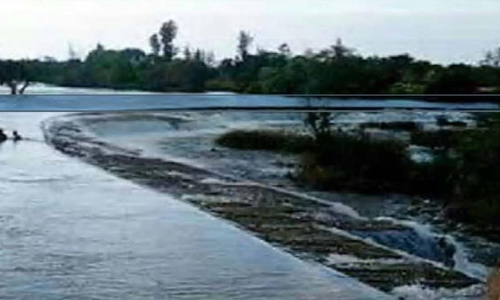Live
- Sanju Samson and Tilak Varma Shine: Record-Breaking Feats in 4th T20I Against South Africa
- India Urges $1.3 Trillion Annual Climate Support for Developing Nations
- Bad air: 106 shuttle buses, 60 extra Metro trips planned to make Delhiites give up cars
- WHO reports declining monkeypox cases in Congo
- CM Attends Kotideepotsavam on Kartika Purnima
- PKL Season 11: Raiding trio of Devank, Ayan, Sandeep help Patna Pirates rout Bengal Warriorz
- Food waste crisis fuels sustainable practices across APAC food & beverage industry: Report
- AI helps erase racist deed restrictions in California
- ATMIS completes third phase of troops' drawdown in Somalia
- PM Kisan Samman Nidhi scheme bringing smile to Nalanda farmers
Just In

The story of Indian civilization depicts the advances it had made in land and water resource management. The ancient Indian texts are full of such details and we find the remains of this lost art of management scattered in historical ruins in this subcontinent.
The story of Indian civilization depicts the advances it had made in land and water resource management. The ancient Indian texts are full of such details and we find the remains of this lost art of management scattered in historical ruins in this subcontinent.
Judicious management of the Land Resources of our country is a major challenge. Many models of resource management designed in various formats have been tried in the past. These have varied from the interventionist approach to the totally people-centred method. One of the most important aspects in this field has been the recognition, in recent years, of the importance of Watersheds.
Early Period
The earliest record of water management by manipulating the natural water regime in India is found in Inamgaon near Pune.
During the rule of the Mauryan Dynasty (320 BC) the construction of water harvesting structure (WHS) and sustainable irrigated agriculture in semi arid regions attained a high level of perfection.
The golden age of tank construction in the Deccan Plateau was during the reign of the Chalukyas of Lakyan (973 to 1336 AD).
Colonial Period :
19th Century to 1947
During the early colonial period (early 19th Century).The British concentrated on building large irrigation works on the Ganga, Yamuna and Kaveri rivers and largely ignored the pre-existing water harvesting and management of minor works in the central region.The chain tanks of Karnataka and Tamil Nadu are amongst the best examples of land and water management in the semiarid topics.
The Roots and Evolution of Watershed Management
One of the first major initiatives in Watershed Management in India was the Bombay Land Improvement Scheme Act, initiated in 1942, just before Independence. Its purpose was to enable contour bunding by all the cultivators in a watershed, even when only two-thirds of them agreed to the task. This also enabled the sharing of costs between the Government and the people.
The Damodar Valley Corporation (DVC) was the first to adopt an integrated approach for the holistic development of a whole river valley. This was the first modern interdisciplinary effort for soil and moisture conservation in India with scientific inputs from various disciplines like soil science, agronomy, engineering, forestry, social science, fisheries, grass land development, etc.
The IV, V and VI Five Year Plan period can be considered as the Watershed era in post Independence India.
In 1974, the Soil Conservation Division of Central Government’s Ministry of Agriculture, adapted a simple strategy of ‘no watershed planning, no money releases to the states’. This was a more focused approach towards watershed management. This was the time when “Subhomagri” in Haryana become a model for watershed development and demonstrated its benefits.
National Watershed Development Projects for Rainfed Areas (NWDPRA)
NWDPRA is the Ministry of Agriculture’s (MoA) counterpart to the World Bank funded pilot project and IWDP. The NWDPRA is centrally funded and operated through state-level Departments of Agriculture for Watershed Development or other line departments.

© 2024 Hyderabad Media House Limited/The Hans India. All rights reserved. Powered by hocalwire.com







